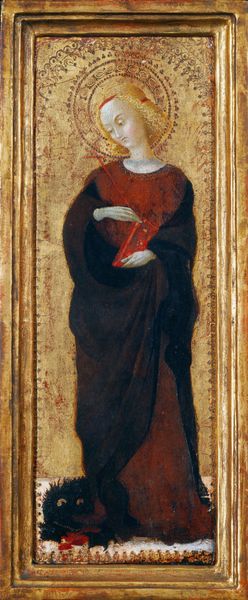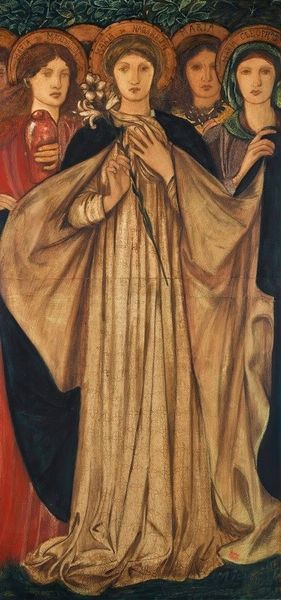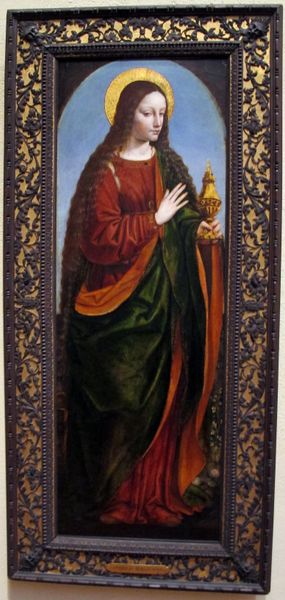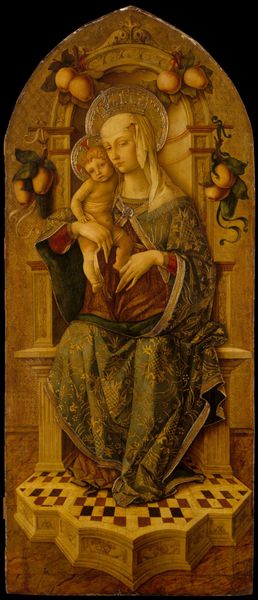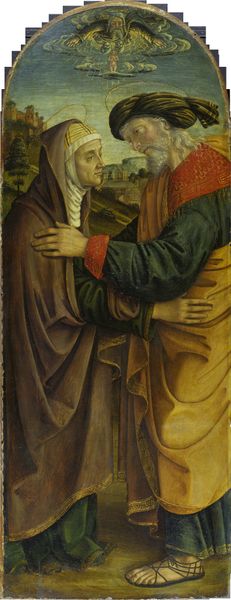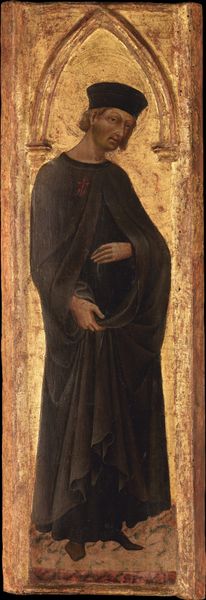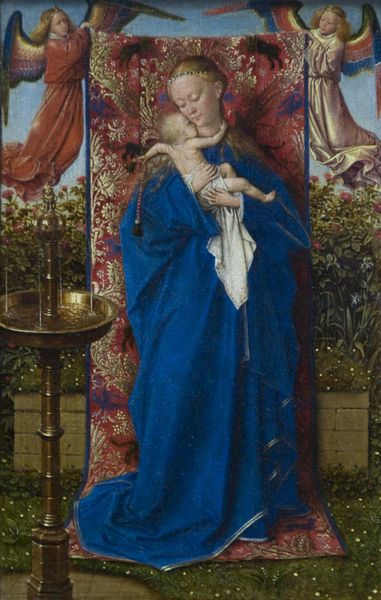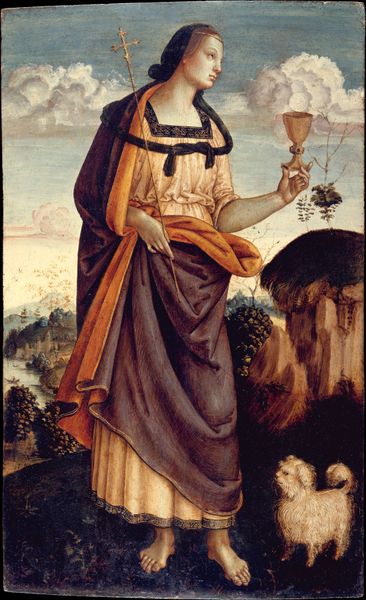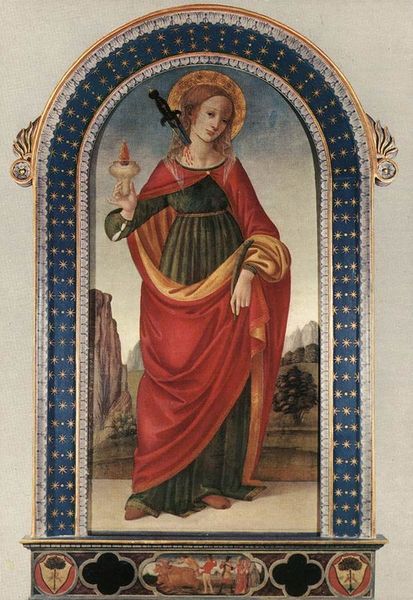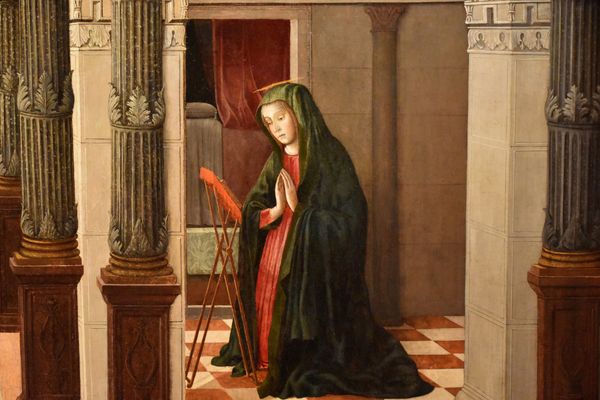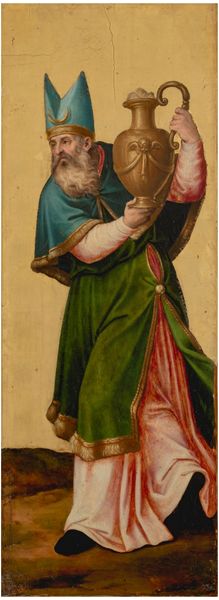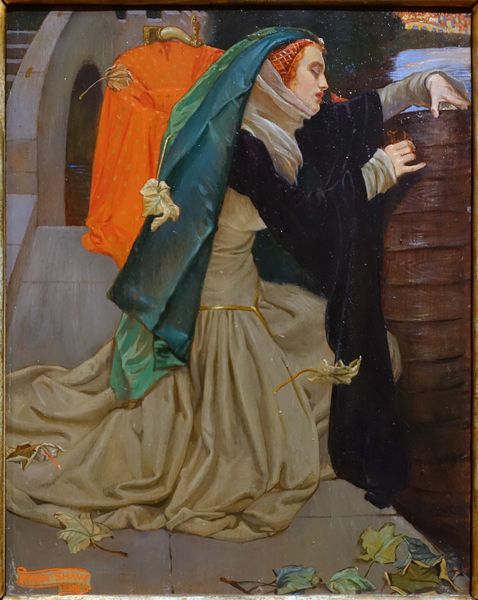
Copyright: Public Domain: Artvee
Edward Burne-Jones made this painting, Hope, in Britain, likely in the 1890s, at a time of significant social change. The image depicts a figure of Hope, chained, yet reaching towards the light. The painting creates meaning through familiar visual codes: a beautiful woman, a symbol of blossoming, the contrast between light and shadow. But Burne-Jones gives these codes a twist. The woman is chained. She strains to reach the light. The image perhaps reflects a Britain where traditional Victorian values were under pressure. The Pre-Raphaelites were interested in reviving medieval artistic styles. But like William Morris, Burne-Jones was also deeply concerned with contemporary social issues, mass production, and the exploitation of labour. The chains could even reflect his concerns about institutional constraints. To understand this work better, we could research Victorian ideas of beauty, gender, and the role of art, alongside the artist's own biography. In doing so, we see how this image is not simply an aesthetic object but a window onto a complex world of social and cultural meanings.
Comments
No comments
Be the first to comment and join the conversation on the ultimate creative platform.
